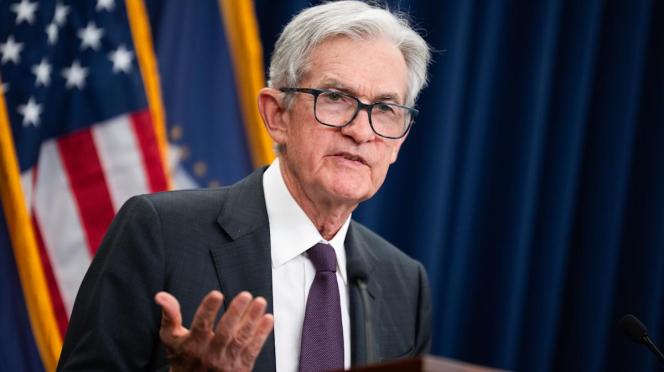Table of Contents Show
Transition Finance Goes Mainstream – Private Banker International
Transition Finance Goes Mainstream. Source: Shutterstock
Across the world’s wealth hubs, a quiet but powerful shift is under way. High-net-worth investors (HNWIs) are no longer confining their sustainable investment focus to clean energy and low-carbon sectors alone.
Increasingly, they are directing capital toward “transition investing” – backing companies in high-emission industries that are actively reshaping their operations to meet the demands of a low-carbon economy. A recent report spanning eight key markets from Standard Chartered reveals that 87% of HNWIs now have an appetite for such investments.
That figure is striking, given that many of these investors built their fortunes in sectors like manufacturing, energy, and heavy industry – sectors under the sharpest pressure to decarbonise. Far from shunning these industries, they see an opportunity: to help future-proof them, and to reap the rewards of companies that lead their peers in adapting.
“Clients in our markets understand the concept of climate transition as many of them have built wealth in high carbon industries,” says Eugenia Koh, Global Head, Sustainable Finance, Wealth and Retail Banking at Standard Chartered.
 Eugenia Koh, Global Head, Sustainable Finance, Wealth and Retail Banking at Standard Chartered.
Eugenia Koh, Global Head, Sustainable Finance, Wealth and Retail Banking at Standard Chartered.
“They are keenly aware of the opportunities and risks – some of them may be seeing demand from international companies come through to their own business and acknowledge that companies that are ahead of transitioning will be competitive and the leaders of tomorrow.”
Beyond Altruism – Toward Financial Resilience
Although transition investing might seem like a natural offshoot of broader sustainable investing, the emphasis here is firmly on financial materiality. “Investors in our footprint are very pragmatic,” Koh explains. “They are not looking at sustainable trends just for altruistic reasons but trends that are also focused on financial materiality.”
This is the first year the survey has explored transition investing specifically, yet the trend mirrors previous patterns in sustainable finance. The motivation is not just about “doing good” but ensuring portfolios are prepared for a world where carbon prices, regulatory changes, and shifting consumer demands could reshape industries overnight.
Markets with Distinct Motivations
While the global appetite is broad, the drivers vary sharply by region.
In Hong Kong, personal values (61%) are the top motivator, followed closely by improved returns (also 61%), with social and environmental impact in third place.
Mainland China shows higher-than-average investor scepticism, particularly around risk and the tangible impact of investments. A lack of benchmarks is also seen as a hurdle. Yet the leading driver here remains environmental and social impact (64%), followed by returns (59%) and compliance with social norms (55%).
In the UAE, positive societal and environmental outcomes lead (55%), with financial returns and personal values tied in second (53% each). Here, one of the top barriers is access – 36% cite limited availability of suitable investment products, a concern unique among the surveyed markets.
Yet despite strong appetite, understanding of the concept is still limited.
“While investor appetite is strong, the findings indicated a gap in understanding, with only 15% of investors able to fully define the concept of transition investing,” Koh notes. “Many still relate it just to climate investing or renewable energy, rather than a broad sector approach of supporting companies in high carbon sectors which are actively reducing their carbon emissions.”
Closing the Knowledge Gap
To close this gap, Koh and her team are stepping up education efforts. “We continue to educate clients on this when we meet with them, and reports like this alongside our Transition Investing Guide are useful resources in educating our clients.”
The guide offers a framework and key questions for evaluating transition-related funds, mirroring earlier sustainable fund frameworks aimed at helping investors navigate greenwashing concerns.
Aligning with Broader Sustainability Goals
For Koh, whose remit spans global wealth and retail banking, transition finance is more than a niche offering. Standard Chartered has committed to mobilising $300bn in green and transition finance by 2030. “We understand that the markets and sectors that require the most financing to transition to low carbon business models are often left out of green finance,” she says.
Opportunities on the Horizon
Over the next decade, the financial and societal opportunities from transition investing could be vast. “Investing in the leaders transitioning their sectors will be an important theme in the next 5 to 10 years as companies globally face increasing regulations and costs of operations such as carbon taxes,” Koh says.
Investor interest is particularly strong in low-emissions fuels and carbon capture and storage (CCS). Green hydrogen has potential, but scalability remains inconsistent. By contrast, CCS is gaining traction, with projects like the UK’s East Coast Cluster aiming to capture and store up to 4 million tonnes of CO₂ annually by 2030 – “equivalent to removing 1.5 million cars from the road.”
The Societal Imperative
Emerging markets are where the stakes are highest. “The markets and sectors that require the most financing to transition to low carbon business models are often left out of green finance,” Koh says.
“In emerging markets, they also tend to be the sectors that are essential for livelihoods and economic growth. The same regions can be the most vulnerable and least prepared for the increasing frequency and severity of weather events from climate change.”
The economic cost of inaction is already visible. “According to Zurich Resilience Solutions, damage from global natural disasters in 2023 totalled $380bn in economic losses – with only $118bn of these losses covered by insurance.”
Future Focus
As the market matures, Koh expects a sharper focus on financial materiality in transition metrics, much as investors now scrutinise material ESG indicators.
For those still hesitant, her advice is clear: “Climate risks are growing for companies and climate risk is investment risk. It is therefore important for investors to also think about their portfolios from this lens, and to be able to incorporate this as part of looking at risks and opportunities in their investments.”
Transition investing, then, is not a speculative bet on a distant future. It is an informed strategy for navigating the realities of today’s shifting markets – and for shaping the resilient, low-carbon economy of tomorrow.













